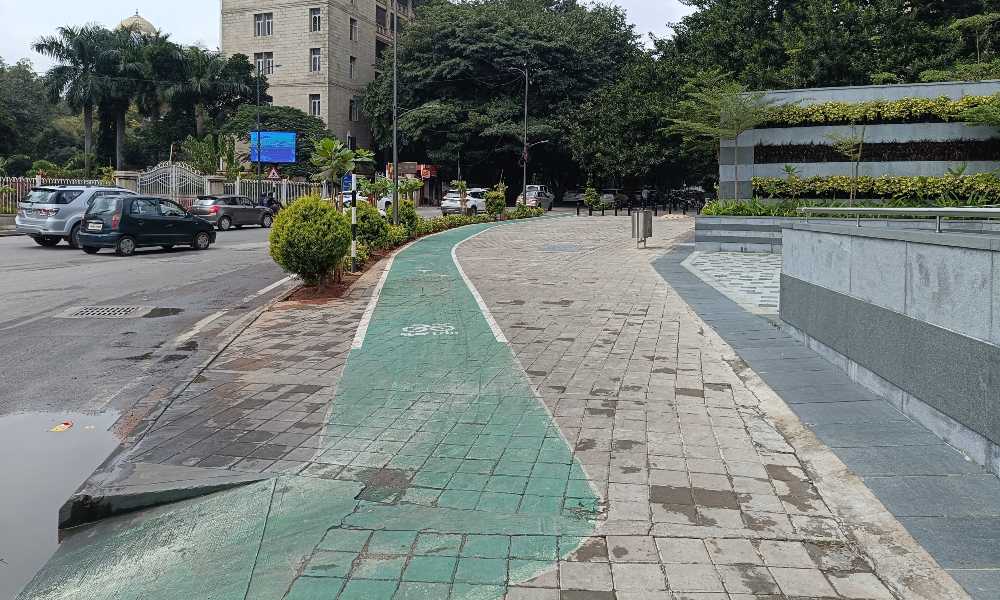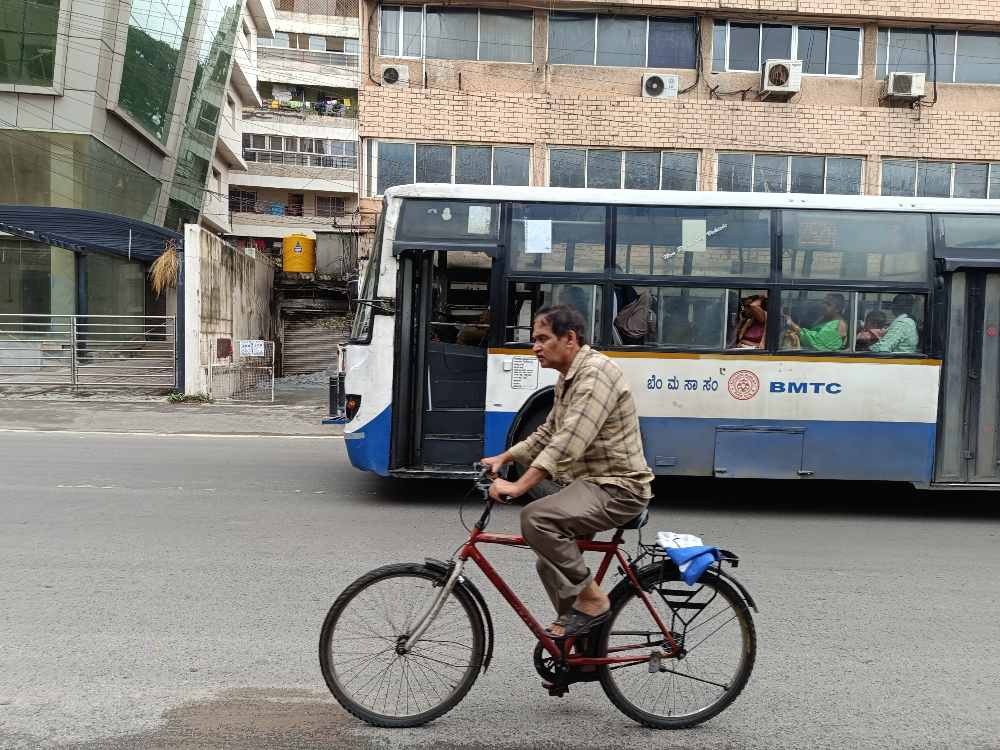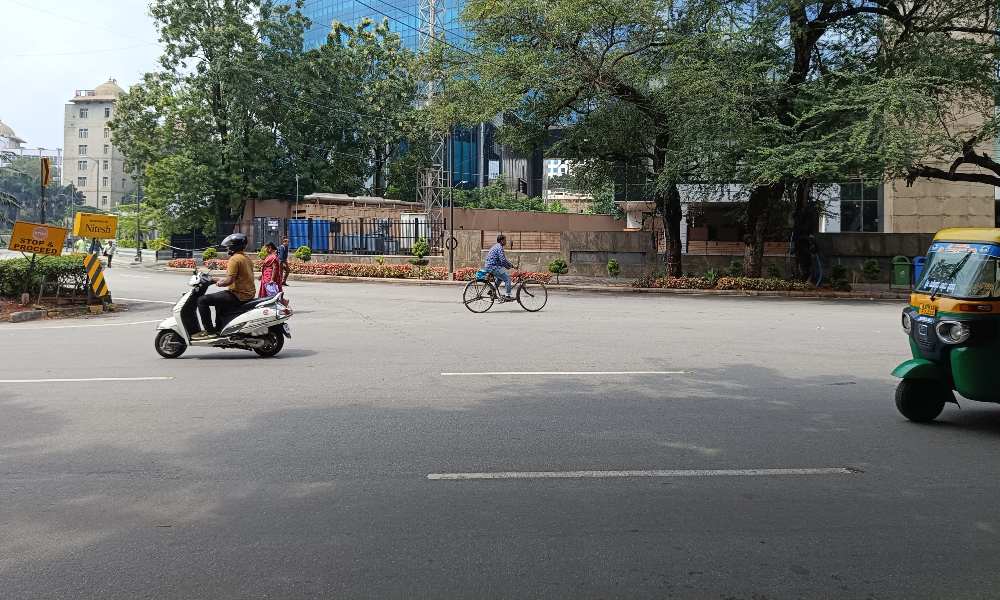Experts say that instead of the currently scattered bicycle lanes across the city, a cohesive network of lanes is essential to create a cycling-friendly environment.
The absence of a cycle lane network within the city has prompted the cycling community to advocate for the creation of dedicated cycle lanes and enhanced safety measures for cyclists. However, officials from the Bengaluru Smart City Ltd. said that there are currently no plans to expand or interconnect the existing cycle lanes in the city.
Recent Bengaluru Traffic Police data revealed a surge in accidents involving cyclists in the city. As of September 2023, 11 fatalities and 52 injuries have already been reported. In 2022, the corresponding numbers were nine fatalities and 41 injuries, in 2021, nine fatalities and 36 injuries, and in 2020, five fatalities and 29 injuries.
Sathyanarayanan Sankaran, Bicycle Mayor, Bangalore said that the authorities have yet to establish cycle lanes along high-speed corridors, posing a significant safety concern for cyclists who must share the road with fast-moving vehicles, he said. Instead of fragmentary cycle lanes scattered throughout the city, a coherent network of cycle lanes, like the metro system, must be established, he said. “Authorities should be proactive in identifying and allocating space for these lanes,” he added.
“To offer citizens a choice in their preferred mode of transport, the city’s transport infrastructure should provide comprehensive connectivity through well-maintained cycle lanes, reliable bus services, and convenient access to metro stations,” he said. The authorities must also address the issue of first and last-mile connectivity, particularly within the last three kilometres of metro stations, he said. “In many cases, the cost of covering the first and last mile of one’s journey exceeds the expenses associated with the actual trip, highlighting the need for alternatives such as cycling,” he added.
Kiran, Assistant Engineer, Bengaluru Smart City Ltd., said, “Currently, there are no plans for further expansion or interconnection of these existing cycle lanes.” Attributing this to the space constraints, he said that many of the older roads and footpaths in most areas lack sufficient width to accommodate cycle lanes.
He said cycle lanes have been developed near Raj Bhavan, Jawaharlal Nehru Planetarium, and the Race Course Road area as part of the Smart City Mission. The primary emphasis has been on constructing these lanes near the central business district (CBD), he said. “These lanes undergo regular inspections and are equipped with cycle stands and signage for the convenience and safety of cyclists,” he said. Though these lanes are situated on footpaths, bollards, which could prevent conflict with other vehicles, have not been installed, he added.
Bangalore got its first cycle lane in 2012 in Jayanagar. This 40-kilometre stretch, a collaborative effort between the Bruhat Bengaluru Mahanagara Palike (BBMP) and the Department of Urban Land Transport (DULT), was laid for a budget of Rs. 2.5 crore. However, the designated area, intended to serve the substantial student and elderly population, transformed into an unintended parking space for motor vehicles due to a lack of clear segregation.

Arun Kumar, who relies on his bicycle for daily commute, said he chose to ride a bicycle due to its cost-effectiveness and convenience. “However, it can be quite scary to share the road with fast-moving vehicles and navigate through traffic,” he said. He often finds himself on the receiving end of honks for his slower pace, he added.
Surya, a college student, said that if dedicated cycle lanes were available and he felt safe cycling through heavy traffic, he would prefer it as his mode of transport rather than relying on buses or paying the high auto rickshaw fares. “If the metro system and cycling lanes were connected, commuting would become significantly more convenient and accessible,” he said.
Hemant, a working professional, said that he has often wanted to use his bicycle for his daily commute to the metro station for work. “However, the thought of navigating through congested traffic on a bicycle, with the associated risks and exposure to pollution, has discouraged me from making that choice. So, I still use my private vehicle when heading to the metro station,” he said Nonetheless, he uses his bicycle for shorter trips, like going grocery shopping, he said. “Riding a bicycle through the narrow streets in the city is much safer than riding it on the wider streets amidst the fast-moving traffic,” he said.

Vikram Bhat, an urban planner, said that presently, around 80 to 90 percent of the city lacks dedicated cycle lanes. Citing the example of the bicycle culture in the Netherlands, he said that it is facilitated by a network of dedicated cycle lanes. “The city needs a well-structured bicycle framework that not only defines rules and regulations for cycling and provides bicycle lanes and parking spaces but also offers incentives such as free public parking for bicycles, especially in locations such as malls,” he said. Such measures would encourage more residents to embrace cycling as a sustainable mode of transportation, subsequently reducing vehicular congestion, he added.
“The city should also introduce a comprehensive road code for cyclists and motorists to create awareness regarding traffic rules,” he said. It should outline safety measures for cyclists, such as wearing reflective jackets and using the left lane. Moreover, it should emphasise that other road users should refrain from using the left lane, as it’s reserved for cyclists, he said.
The urbanisation and globalisation of Bangalore, which was once known as a retiree’s paradise, has been haphazard which has resulted in both micro and macro-level issues being overlooked, he said. “The lack of focus on sustainability has left the city with narrow roads and inadequate footpaths that cannot accommodate cycle lanes,” he added.
Nonetheless, as the city progresses with new development projects, the incorporation of cycle lanes should be a priority, he said. “In congested areas where creating separate cycle lanes isn’t feasible, hybrid lanes, allowing bicycles and other motorised vehicles to coexist, should be demarcated with a preference for cyclists,” he said. The width of cycle lanes can vary based on available space, but ideally, they should range from 1.8 to 2 meters, clearly distinguished from other traffic lanes, he added.
However, the planning and development of cycle lanes must be based on practical considerations and scientific data, he said. “Surveys and studies should be conducted to understand the population’s needs and traffic dynamics, ensuring that cycle lanes are not merely created for the sake of it but serve actual routes that people desire and use,” he said. This approach will play an important role in transforming Bangalore into a more sustainable and cyclist-friendly city and prevent it from mirroring Delhi’s deteriorating air quality index (AQI), he said.

The Bicycle Mayor said that the strict enforcement of traffic rules and regulations, particularly in cases where cyclists are at risk, will instil confidence in the cycling community and encourage more people to use cycling as a mode of transport, he said. “A pro-cycling stance should be adopted by authorities and other stakeholders to prioritise cyclists’ safety through enhanced infrastructure and security measures,” he said.
The initiatives by the Bangalore Metro Rail Corporation Ltd. (BMRCL), such as permitting foldable bicycles in the metro and designating parking spaces for bicycles at metro stations, are commendable steps, he said. “These measures will encourage more people to opt for cycling as a sustainable mode of transportation,” he added.
Cycling offers an efficient and cost-effective means of transportation and promotes physical well-being, he said. Embracing cycling can significantly reduce the negative environmental impact of commuting and contribute to a more sustainable and healthier city, he said. “By choosing cycling, individuals become part of the solution to urban transportation challenges and climate change rather than contributing to it,” he added.




